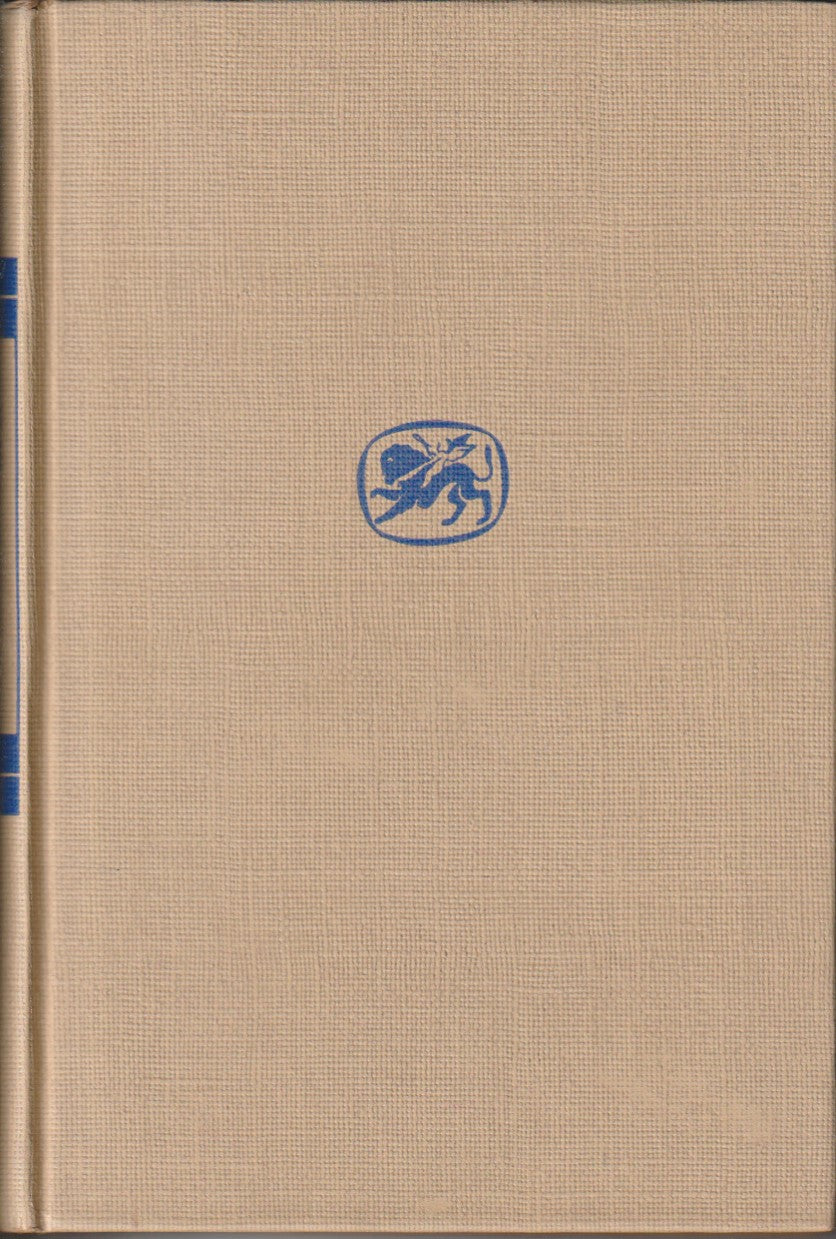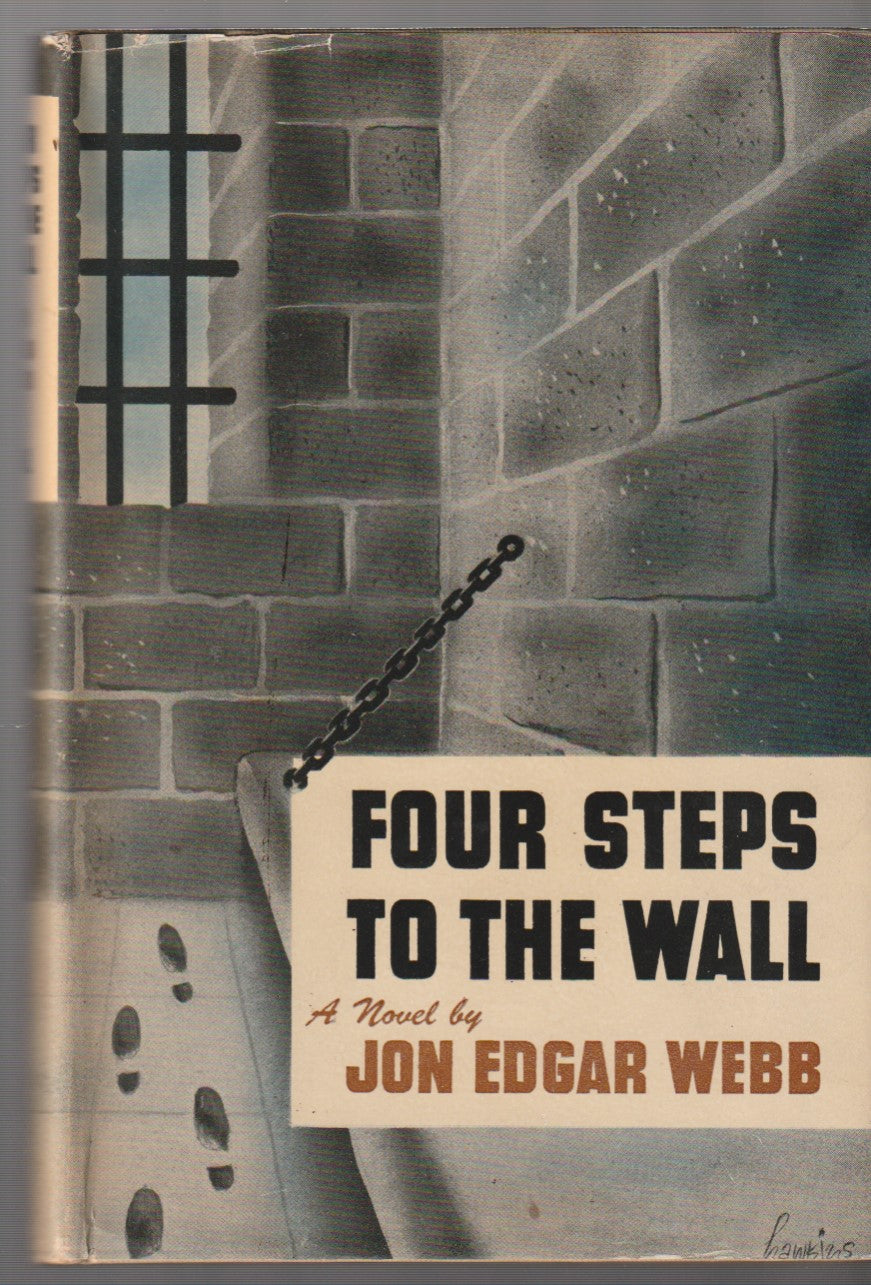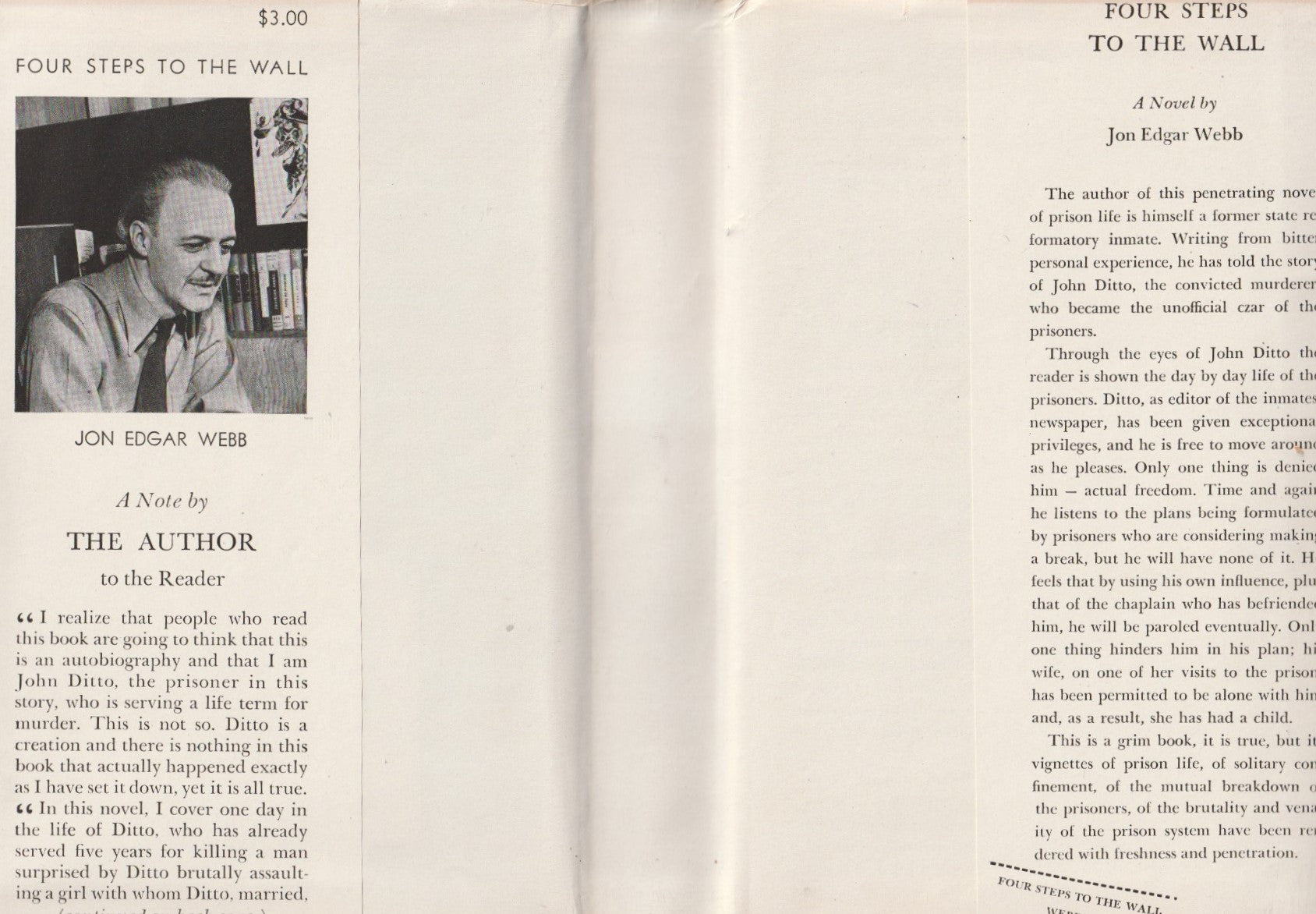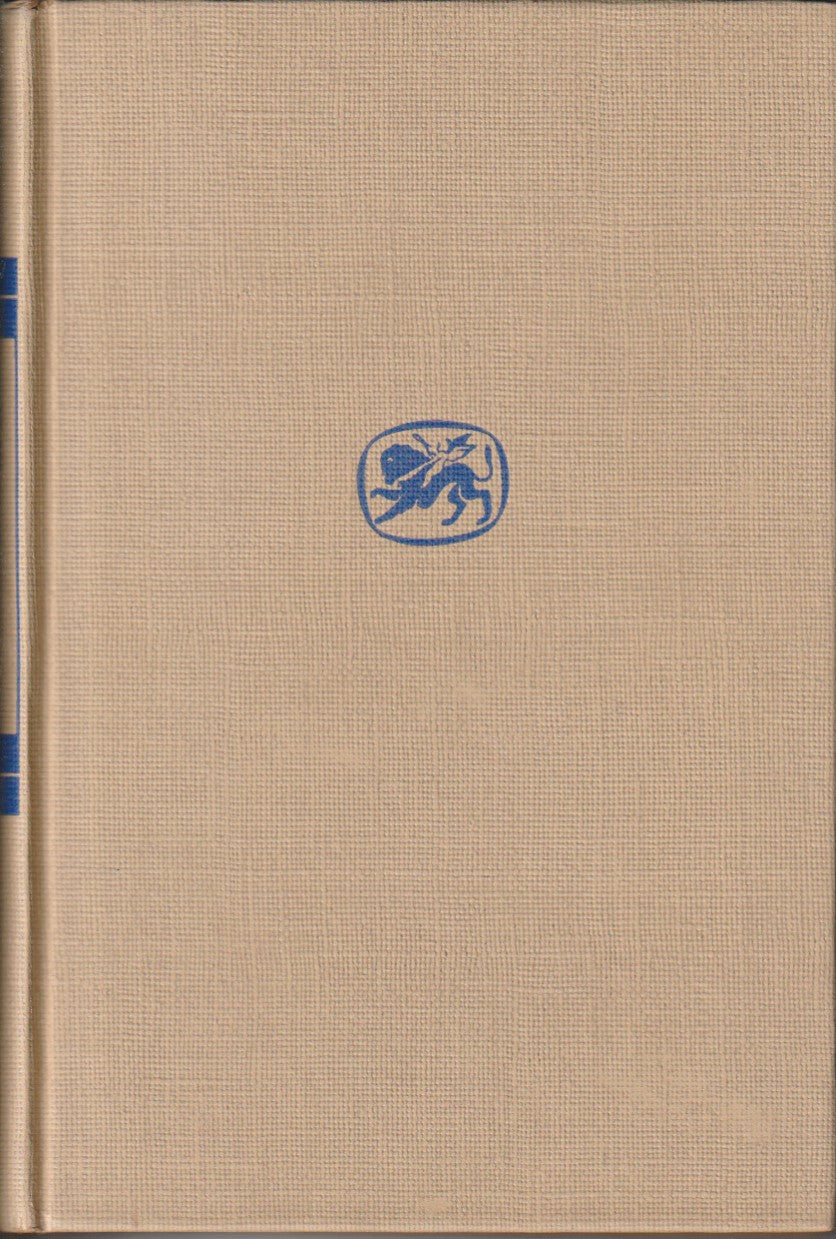The Buk Shop
Inscribed Photograph and Hardcover Four Steps to the Wall by Jon Edgar Webb
Inscribed Photograph and Hardcover Four Steps to the Wall by Jon Edgar Webb
Couldn't load pickup availability
Offered here is a first edition, hardcover copy of Jon Edgar Webb’s Four Steps to the Wall. It was published by Dial Press Books in 1948 and is in excellent condition.
Also offered is an 8” x 10” photograph of Jon Webb taken in the late 1940s. The photograph used in the book is from the same session as this photograph, and there is an interesting backstory to the photographer herself.
Jon Edgar Webb was a crime beat reporter at the Cleveland News when he decided to try to be a criminal himself. He robbed a jewelry story and managed to get in and out of the store with the goods, but during the getaway he went down the wrong alley and ended up serving 30 months in the Ohio State Reformatory.
While in prison, Webb became editor of the prison newspaper and learned to set type, two skills that would come in handy when he started LouJon Press. He also began writing chapters for his novel, which went through many working titles as it progressed.
Four Steps to the Wall was well received, leading to a mass market paperback issued by Bantam Books in 1953.
The May 10, 1948, issue of the Honolulu Star-Bulletin had this to say:
"FOUR STEPS TO THE WALL." Bv Jon Edgar Webb. Published by the Dial Press of New York. The story of John Ditto's life within prison walls Is a strange one built about his routine as editor of the prison paper and general confessor for men of all types.
Though escape preoccupies the attention a great part of the time for most of the men, John refuses to become a party to any of the schemes. This story is a synthesis of the author's memories of the years which he spent in prison because of robberies which he had committed. In the book one will find excellent writing, interestingly contrasted personalities and a graphic drawing of the ugliness of institutional existence.
The events leading to the publication of the novel were typical of the Webb’s trials and tribulations, especially when it came to their finances. But they persevered, living on bread and coffee in The Village in New York while completing revisions the publisher requested in order to avoid any fallout from the recent Hearst campaign against “indecency” in literature.
It was during their time in the Village that the photograph offered here was also taken.
Measuring 8” x 10”, the photograph is hand-inscribed by Webb:
To Lee & Tony
Jon Edgar Webb
3/23/46
There are also some scribblings in the bottom border of the photograph, and what appears to be some tape remnants along the entire border.
As the back of the photograph indicates, the photograph spent time in a newsroom and was used for his obituary in 1971. The clipping only contains a portion of the obituary.
Written on the back page is:
w/Lagmeappe No. 1
Sun Sec. 2
Set 2 1/8” x 3 ½”
Lagmeappe means “a little extra” in Cajun. In this context, it’s probably the name for the supplement of a newspaper that published the obituary, most likely named The Sun.
There is also a stamp for STATES ITEM FLASH, a publication that appears to have been part of the famous New Orleans newspaper, The Times-Picayune.
Besides some other notes, there also appears to be an address for Webb in Cleveland, where he lived prior to serving time at the Ohio State Reformatory.
But the photographer’s stamp is perhaps the most interesting tie in here:
PLEASE CREDIT
ANGELA CALOMIRIS
9 JANE ST. N.Y.C.
Calomiris was also livng in the Village at the time Webb was doing his revisions on “Four Steps to the Wall”. She was following her dream of becoming a professional photographer when, according to Wikipedia:
“… Calomiris took up residence in Greenwich Village and ‘instead of buying food, she saved money to buy a camera’. She worked for Broadway photographer Hal Phyfe and also joined the Photo League, a group of amateur photographic enthusiasts, which included a number of communists among its members.”
Even though she was a known lesbian, which was considered a crime in New York at the time, the FBI approached her to become an infiltrator of the Communist Party of the United States in 1942. She eventually agreed and spied on the party from rom February 1942 until April 26, 1949. She would testify against 11 party leaders, “who were convicted of conspiracy to advocate the overthrow of the US government on October 13, 1949.”
The point being, Calomiris was still an FBI informant when she took this photograph of Webb.
While I don’t have the expertise to grade fine photography, here is my description.
There are also some scribblings in the bottom border of the photograph, and what appears to be.
The paper is not very thick, but the image was printed well and is very sharp. You can clearly see the various objects surrounding Webb in the photograph. There are scratches, lots of wrinkles, and some tape remnants along the entire border and scribblings on the bottom border.
Jon Edgar Webb and his wife Louise were the founders of LouJon Press. The couple was responsible for transforming Bukowski into an established writer, even if fame wouldn’t occur until years later. TLouJon published Bukowski’s first true books, “It Catches My Heart In Its Hands” (1963) and “Crucifix in a Deathhand” (1965). These books are true works of art in and of themselves. The detail, the printing methods, the craftsmanship, and the pure insanity it took to undertake these endeavors was as unparalleled then and as it is today.
They also published Outsider magazine, which became the standard for poetry journals at the time. No other publication attracted nearly the talent that appeared in its pages and the production value of the magazine itself was unrivaled. Bukowski appeared in all four issues, with a large collection of poems in Outsider 1 (1961) and as the named “Outside of the Year” in Outsider 3 (1963), featuring Bukowski on the cover and a large center section.
Box 25 and Case 5
Share





















